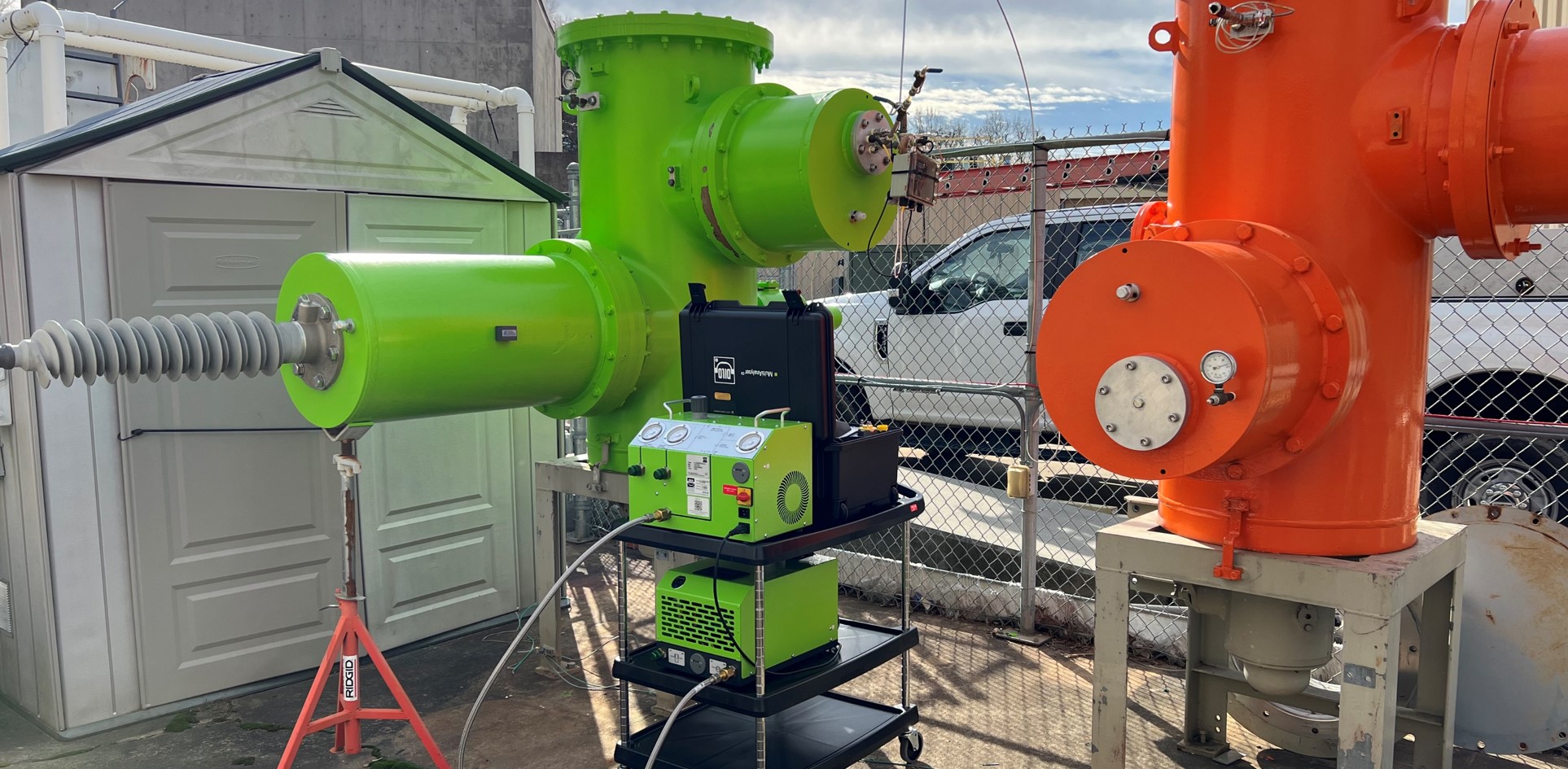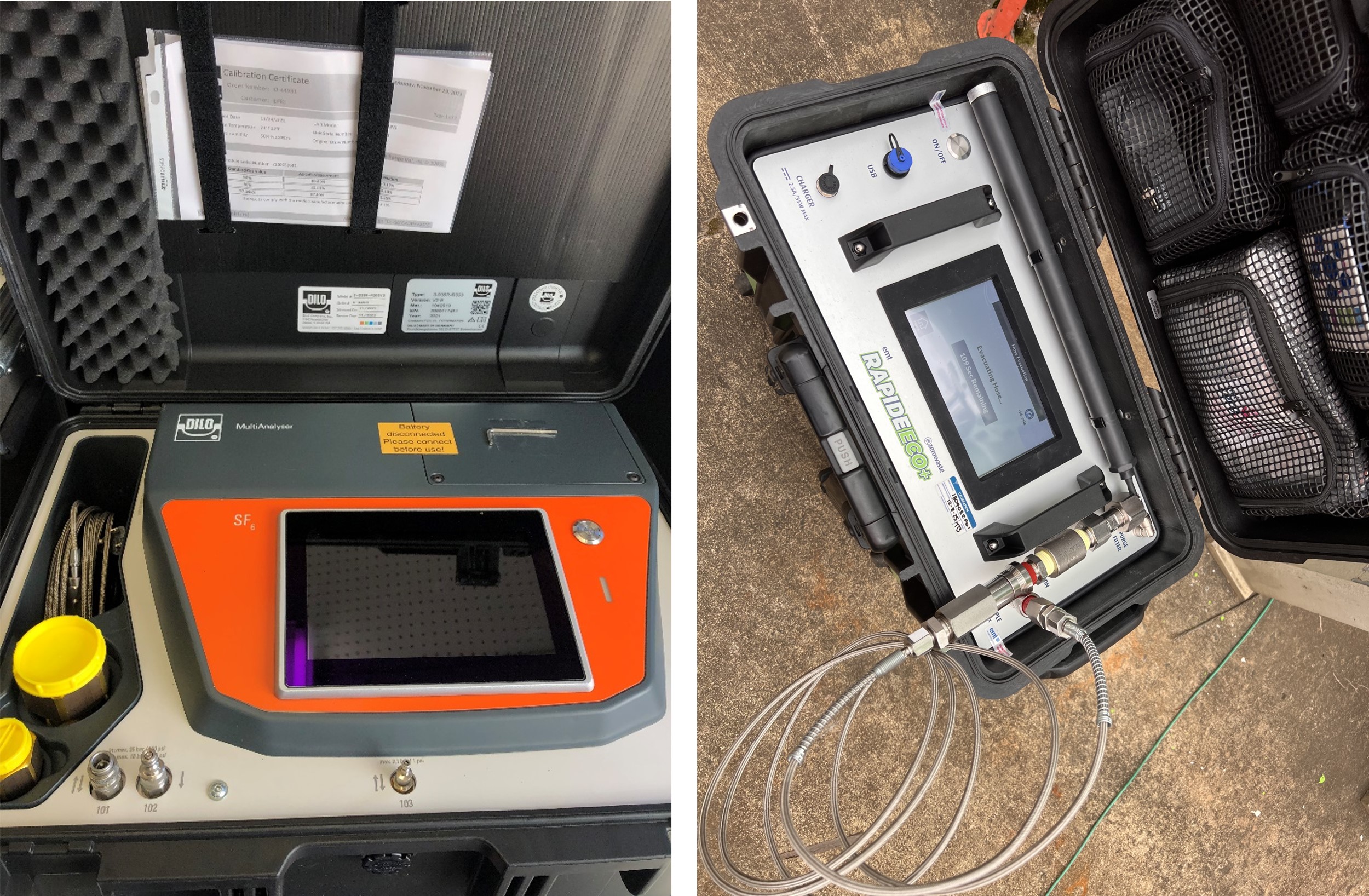P37.108: Gas Insulated Substations and Lines
Objective
Gas-insulated substations (GIS) and gas-insulated lines (GIL) offer many benefits, including compact size, modularity, enhanced physical security (for indoor applications), and protection from pollution and harsh environments. These advantages make GIS and GIL attractive options for modern electrical infrastructure. However, they also present unique challenges, particularly in reducing sulfur hexafluoride (SF6) emissions and effectively detecting and locating defects. EPRI research is addressing these challenges through comprehensive laboratory tests and field evaluations. The value provided will be practical and well-informed guidance on the application, use, and management of GIS and GIL. The research focuses on two key areas: SF6 alternatives, and condition monitoring of GIS/GIL systems.
Given the large volumes of SF6 used in GIS and GIL, it is important to explore the upcoming technologies and dielectrics that offer reductions in that usage. EPRI’s GIS laboratory is dedicated to addressing key open issues, such as identifying and testing alternative gases and materials that can perform similarly to SF6 but with a lower environmental impact. The research will also report on the latest field applications and trends in the industry.
In the context of GIS condition monitoring, there are various existing and emerging techniques, including ultra-high frequency (UHF), acoustic emission, and SF6 gas analysis. Each has unique merits in defect detection. To better evaluate each approach, EPRI has built and commissioned a full-scale GIS laboratory. The facility allows EPRI to introduce a range of defects into GIS components and assess the performance of each technique under controlled conditions. The effectiveness of each technology will be quantified. The results will guide the industry in specification, interpretation, and adoption of technologies. By addressing the challenges associated with SF6 emissions and defect detection, EPRI is contributing to the development of more sustainable and reliable electrical infrastructure.
Research Value
The research aims to provide value in three key areas:
- Guidance on SF6 alternatives
- Lowered maintenance cost of GIS and GIL through improved diagnostics
- Improved reliability of electric service through better reliability and availability
Approach
In 2026, the approach will involve both conducting laboratory testing on GIS and researching field applications and industry trends. The results obtained each year will contribute to the EPRI GIS/GIL Guidebook. The following tasks will be conducted to support the objectives:

The GIS and GIL of the future
The first goal of this 2026 task is to provide valuable and practical insights into the continually growing topic of using C4-fluoronitrile mixtures or clean air as insulation gases instead of SF6. This portion of the research will focus on exploring the key issues related to gas handling, analysis, safety, and reclaiming/recycling.
The second aim of this research stream encompasses all three alternative SF6 technologies. With the implementation of new insulating technologies, independent of the composition, the ability to detect degradation of internal components non-invasively is of high importance to users. The plan is to evaluate new detection technologies, detection techniques previously used for SF6-based systems, and/or mechanical wear detection techniques used for other gas systems to determine physical system.

EPRI Guidebook on GIS and GIL – 2026 update
The Guidebook is expanded each year to include research results and industry advances. Under this task in 2026, EPRI will learn from the field implementations on new GIS and GIL concepts. The collaborative nature of EPRI allows for sharing of utility experiences with new technologies. The sharing of these experiences will help the industry reduce risks when selecting and applying these new technologies. Examples will include field deployments of non-SF6 GIS/GIL, long GIL runs, online monitoring technologies, and novel current transformer (CT) and potential transformer (PT) concepts.
Anticipated Deliverables
| Deliverable | Description | Date |
|---|---|---|
| TheGIS and GIL of the future | Valuable insights from the EPRI laboratories using new SF6-free gas alternatives. | 12/31/2026 |
| EPRI Guidebook on GIS and GIL – 2026 update | Practical and well-informed guidance on GIS and GIL- with the 2026 chapter on new GIS/GIL technologies deployed in the industry. | 12/31/2026 |
Past EPRI Work on Topic
| Product ID | Title | Description | Published Date |
|---|---|---|---|
| 3002030042 | EPRI Guidebook on GIS and GIL - 2024 Edition | EPRI research results and industry trends and lessons learned. | December 2024 |
| 3002030043 | Applying new GIS/GIL Technologies | Practical and well-informed guidance on new GIS and GIL technologies– including SF6 alternatives. | December 2024 |
| 3002027117 |
GIS and GIL EPRI Guidebook – 2023 Edition | This guidebook is updated each year to include the latest research. In 2022, chapters were added on SF6 leak detection. | December 2023 |
| 3002027120 |
SF6 Alternatives - Industry status update for 2023 |
A status update of the current state of the industry when itcomes to progression and availability of SF6 alternatives. | December 2023 |